► 22kW home charger on test
► Available now and priced from £1199
► Cheaper 7kW A3 model also newly released
As more and more energy suppliers start to offer cheap overnight electricity tariffs, it’s tempting to take advantage of the deals in order to save hundreds of pounds in running costs on your electric car. Even something with an enormous battery like the BMW iX can be charged for around £7. That’s over 300 miles for the cost of a pint.
But there is a problem. Most home chargers are limited to 7kW – plug in your Volvo EX90 with its 107kWh battery and there’s no way you can dump enough juice into it quickly enough to take advantage of the cheap rate.
Andersen EV has a solution, if your home or business has a three-phase electricity supply, as it’s one of the few companies offering a 22kW charger. Others include Simpson and Partner and Easee Charge.
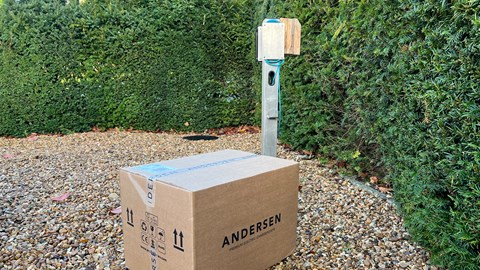
What is it?
Andersen offers two chargers – the A3 that runs at 7kW so is suitable for most residential properties in the UK and the slightly more expensive A2 that we’ve got on test.
Designed and made in the UK, Andersen is keen to trumpet its eco credentials in that 74 per cent of the suppliers it uses are also UK-based so the firm doesn’t rack up many cargo miles building the charger.
It’s one of the most stylish chargers on the market, offering a clean design with built-in cable storage so you’re not left with messy wires dangling all over the place. Both the A2 and A3 come in a variety of colours and finishes, ranging from a standard choice of 13 colours (ours is a no-cost option Windsor Grey) to accoya wood finishes (four of those, £200 each) and even a carbon fibre effect (£320). You can also choose the body colour as well, again in 13 pantones.
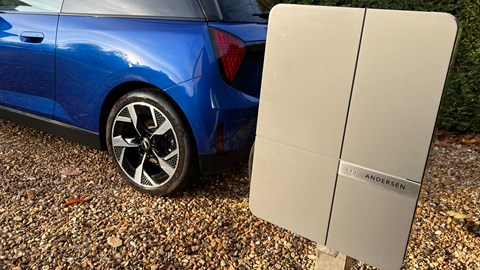
For the ultimate in bling, you can even do a paint-to-sample match so that it ties in with your home’s paint colour.
Because it hides the cables within it, it’s not small. Ours comes with a 6.5m cable as standard and measures 348mm across and 494mm in height. As a way of comparison, a small box like Podpoint’s is just 290mm wide and 330mm high.
You’ve also got to be careful how you put the cable away as it needs to be wound tightly around the unit so that the plug sits in its recess at the top. There are a few neat touches as you pack it away: brushes around the housing sweep any leaves off the cable as you wind it in; there’s a magnetic lid on top to hide all the gubbins away; and when you lift the lid, a light illuminates so you can find it all easily at night.
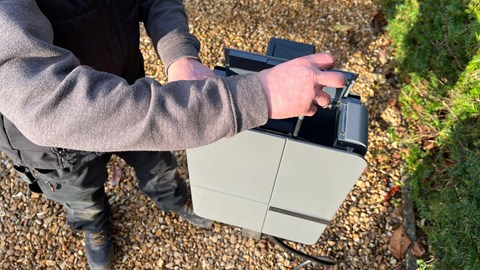
If you do get one, don’t be confused by the display lights on the front of the A2. They’re tastefully discrete, as you’d expect, and glow green when it’s ready to charge and then amber when it’s actually charging, which is entirely the opposite to what you’d expect. Andersen tell me this has been altered on the newer A3 units.
Installation
This was a reassuringly quick and easy process: one pre-install site visit then a full day of two engineers to get it all built.
Normally, it’s just the one engineer but because everything on my house is always more complicated than it needs to be, Andersen had to pull a cable through from the distribution board to the charger post and that’s a two-man job.
Because Andersen has its own install team (you can opt for your own sparky if you prefer), it felt like a very personal experience where the engineers genuinely wanted it to be a seamless process for the customer. There was a pride that you don’t often get in big corporations and also a healthy amount of flexibility.
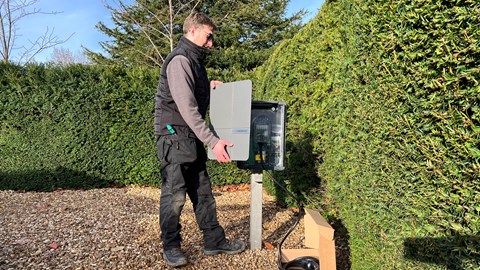
I already had a charger post installed at home that was too small for the A2 but after the pre-site visit, Andersen got a new metal mounting plate made up and then fixed the A2 to it.
It’s the sort of thing that makes a difference. The A2 isn’t cheap but by making the customer feel valued, it goes some way to off-setting that additional cost.
Any apps?
Like all these chargers, the Andersen system comes with a fully integrated app that is both easy to use and so far has been reliable. You can input your tariff and then export your charging history so that it’s easy to generate reports for any expense claims.
It works well if you’ve got a solar system and is also intelligent enough that it can take advantage of different rates at various points of the day, like you get with the Agile Octopus tariff.
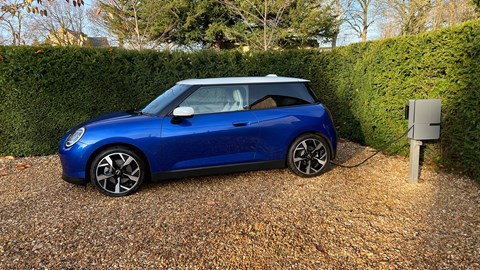
Verdict
The Andersen sits in an interesting area of the market. To a certain extent, a home charger is just a glorified plug and when was the last time you paid top dollar for one of those. And the Andersen isn’t cheap – all in, my install was £2844 including VAT (£1199 for the charger, £190 for the 22kW tethered cable, £810 for a three-phrase install, £275 for the extra cabling to get from my distribution board to the charger location, £50 mounting plate and £320 for the second engineer).
But equally, these chargers tend to be on the front of your house and some people don’t want an ugly black box spoiling the look of your pride and joy. Coupled with the Andersen’s seven-year warranty and the ease of the entire process (I literally answered three emails from start to finish), it goes a long way to easing the pain of the premium price tag.
Overall 4/5
Design 5/5
Ease of use 4/5
Value for money 4/5
Reliability 5/5
Customer service 5/5